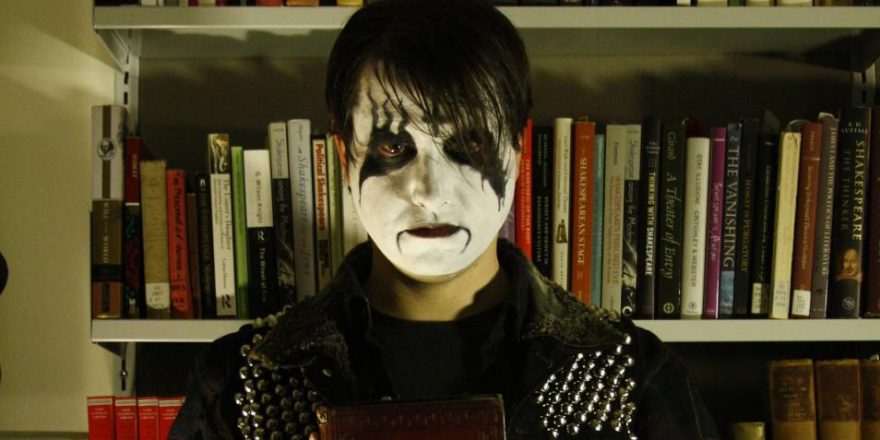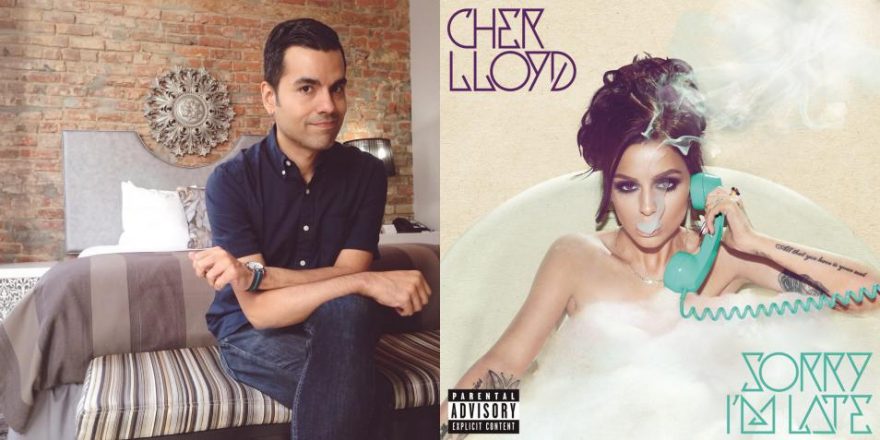Whenever I talk about my childhood, I feel like most people don’t fully grasp the implications of growing up in the Pentecostal church. That’s why I use vignettes to make myself clear. I’ll talk about the time I watched my mother perform an impromptu exorcism on a neighborhood woman in front of the school where I went to kindergarten. Or how my mother often dropped to the floor in a seizure-like state while speaking a nameless dialect we called “speaking in tongues.” (She also spoke Spanish, but anyone can do that.) Other times, I tell the story of how my older brother once dragged me up a flight of stairs by the neck, choking me in a rage, after finding out that I’d planned to become a Hindu monk. He told me later that his response was out of fear for my soul, that he didn’t want me to go to hell and that he didn’t know what else to do. But I was only 16 years old and, at the time, it just felt like he was trying to kill me.
My family believed in a literal Satan, and we believed in literal demons that did the devil’s dirty work. We were raised to believe that Satan was not a biblical metaphor, but, rather, a historical person-angel who walks the Earth, determined to deceive God’s followers, to promote hedonism and to cultivate a godless society. That Satan’s name itself means “adversary” in Hebrew only underscores his arguably necessary position in Christian theology; without the presence of this charismatic antagonizer, the entire good-versus-evil narrative of evangelicalism is called into question — and with it, the foundations for orthodox Christian morality. For a true believer, the literal existence of Satan is as important to the internal logic of Christianity as the existence of Jesus himself.
I bring this all up for two reasons. First, it seems important to distinguish that the kind of black metal I want to talk about here — the one that relies on traditionally Satanic themes and imagery, as opposed to, say, Nordic mythology — is essentially just an inverted version of the Christianity I grew up with. It’s not so much a theology as an anti-theology. But also, this personal preface lends added context for an album that applies pressure to the well-known paradox that belies what I’ll call “pop cultural Satanism.” For so many years, as a young kid who realized he was gay before he even had a word for it, I was trained to believe that it was Satan himself who was “turning me gay”; I believed that being gay was “evil,” and that by extension, I must be “evil” too. One might presume that a consistent black metal ideologue would celebrate such anti-Christian behavior and non-reproductive sexuality as legitimately Satanic. (This position, in case you’re wondering, has been the official doctrine of Anton LaVey’s Church of Satan since 1966.) So imagine my confusion when I realized that the burgeoning black metal scenes of the ’80s and ’90s — rife with band names like Sodom and songs called “Fistfucking God’s Planet” — were every bit as homophobic as my family church. (In the most infamous example, Bård Guldvik “Faust” Eithun, former and current drummer for black metal titans Emperor, went to prison for the 1992 slaying of Magne Andreassen, a gay man.) It’s one thing to be rejected by Jesus, but where do you go when you’ve been rejected by Satan?
If you have yet to hear about the conceit behind the Soft Pink Truth’s new album Why Do the Heathen Rage?, the short version goes something like this: Matmos’ Drew Daniel, who is both openly gay and openly into corpse-painted bands, decides to make an album of covers of songs by groups such as Venom, Mayhem, Hellhammer and the like. He refashions the material using mostly techno and industrial conventions while retaining the abrasive and sometimes shrill nature of the originals. At the same time, there is a subtle queering going on: an homage to Chicago house pioneer Adonis sneaks its way into Darkthrone’s “Beholding the Throne of Might,” and a spoken word reading of Arthur Evans’ 1978 queer pagan classic Witchcraft and the Gay Counterculture reclaims the Satanic invocation trope with an assist from Antony Hegarty, who seems to be doing his best David Tibet. Sarcófago’s “Ready to Fuck” is reimagined as a dark, but distinctly ’90s-styled house track, its misogyny undermined by Wye Oak’s Jenn Wasner, who flips its gendered point of view. These are the kinds of things I suspect most people will pick up on.
What fewer people might recognize, at least at first, is just how little it actually takes to “queer” black metal at all, and this is because black metal — as a stylization and literary expression — is ultimately a sensibility, much in the same way that Camp is a sensibility. Both deal in affectation and performance and, as such, they invite imitation. Which is to say that queerness and “black-metalness,” if they can be isolated as culturally developed social discourses, technically share more than just their affront to so-called biblical morality; they share a mode of aestheticism.
Susan Sontag’s legendary 1964 essay “Notes on ‘Camp'” draws out two particularly relevant connections to this idea. In the first, Sontag writes, “The essence of Camp is its love of the unnatural: of artifice and exaggeration.” In the other, she admits, “I am strongly drawn to Camp, almost as strongly offended by it.”
Black metal’s dependence on artifice and exaggeration grew with its popularity so much so that, for many years, the very notion of being “extreme” turned into a sort of real-life black metal arms race. (Former Mayhem vocalist Per “Dead” Ohlin, for example, famously carried a dead crow in a plastic bag so he could sing “with the stench of death in his nostrils” — much to the praise of his peers. He has since died, in 1991, a suicide.) But the artifice and exaggeration, or “black Camp,” that Daniel taps into hides in plain sight. It’s in the overdramatic guttural tone of the vocals. It’s in the almost comic over-enunciation of lyrics like, “I burn His sign into my heart/Preces infandus/possess me” from Sargeist’s “Satanic Black Devotion.” It’s in the obsessively lower-fi studio aesthetic of some of the records that Daniel cites here — their sound so purposely degraded, in fact, he needed Owen Gardner of Horse Lords to decipher their musical notation in order to even make these covers possible.
The artifice and exaggeration is also in the “drag,” which Daniel faithfully appropriates for much of this album’s visual marketing. If queer drag is about applying pressure on social constructions of gender and subverting heteronormativity, then “black drag” works in much the same way, using a visual language to exploit our preoccupations with good and evil while subverting Christian symbolism. For both, costume is the connective tissue between politics and performance. Their overdetermined takes on “femininity” and “evil,” respectively, are bound in self-awareness and the absurdity of hard lines.
Sontag’s claim that Camp is as attractive as it is offensive emphasizes another important similarity between queer Camp and “black Camp,” and that is the way Camp itself is an unstable expression. Oscar Wilde’s version of Camp, for example, offended contemporary Victorian morality as much as it delighted theater audiences in the late 19th century but it would not have the same vulgar effect today. Which is why part of what makes Why Do the Heathen Rage? so delightful — and unobjectionable — is that its “black Camp” is largely dated. To keep up with black metal’s aesthetic standards of artifice and exaggeration today, several artists have migrated towards other extremes — including outright fascism. As white supremacist, convicted murderer and Burzum frontman Varg Vikernes explains in Michael Moynihan and Didrik Søderlind’s Lords of Chaos: The Bloody Rise of the Satanic Metal Underground (Feral House, 2003), “The more extreme I look, the more they will be able to follow, because ten years from now this will not be extreme anymore… It’s pushing the line out further and further.”
Have you ever seen a drag performance where the queen on stage became so grossly offensive that it wasn’t even funny anymore? Vikernes and his ilk are kind of like that these days.
In an interview with Pitchfork about this project, Daniel wonders exactly who the audience for this record is. “Nobody, basically,” he surmises. “Black metal people aren’t going to like it because it’s faggoty disco, but actual dance music people aren’t going to like it because it’s weird people screaming about Satan.”
It’s a fair enough guess, I suppose. But Daniel doesn’t seem to account for someone like me, who — in spite of the genre’s history of homophobia — used early black metal as a way of disconnecting from the church, an institution that somehow seemed to be killing far more gay people than Faust ever could. (The liner notes for Why Do the Heathen Rage? contain an essay where Daniel attacks the fascist and hateful politics of black metal. It concludes, “Remember Magne Andreassen!”) Bands like Celtic Frost and Bathory gave me a site to challenge my inherited belief systems, even superficially, until I could accept myself. But more than that, I’d argue that they primed me for the “faggoty disco” of house music, which I embraced in the mid ’90s, followed by spending the first five years of the millennium as a club DJ. Black metal framed hedonism as a viable alternative to Christian repression, but house music named it a merely human impulse. The gap between these ideas, I’d argue, isn’t as wide as you think.









